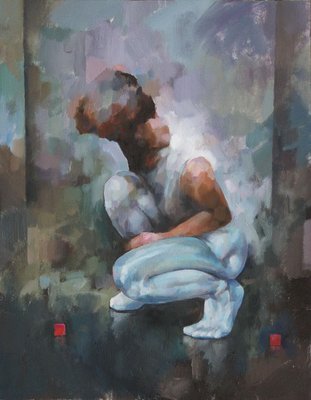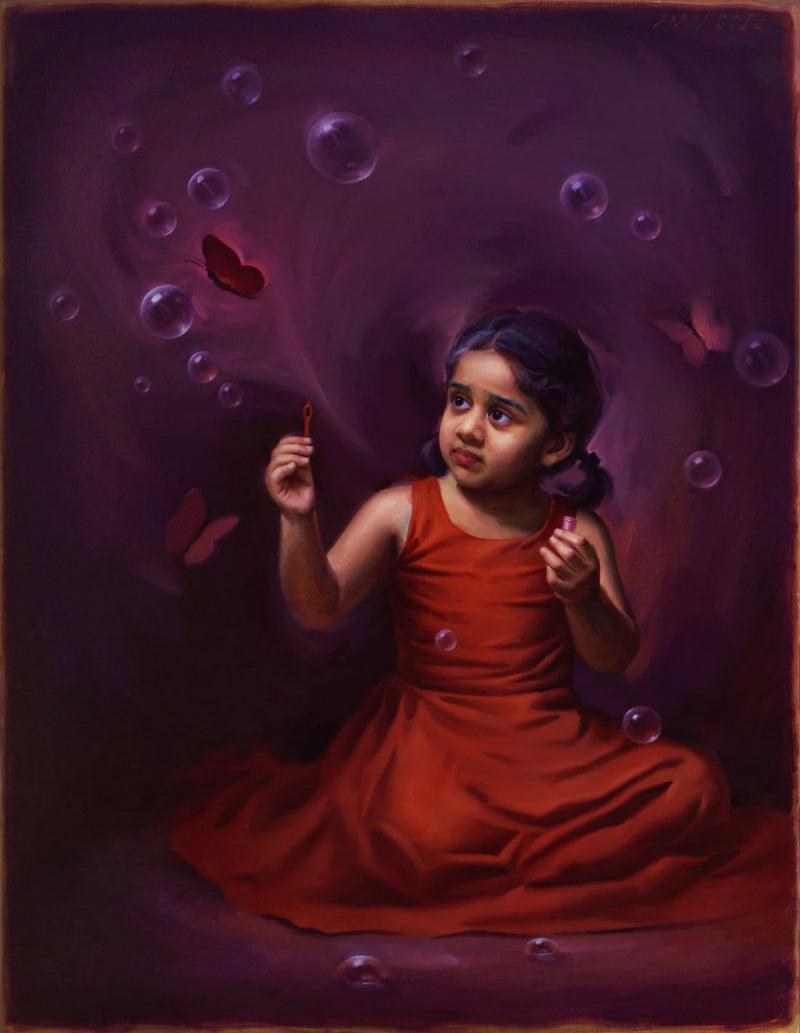Understanding Composition and Color in Figurative Oil Painting
Wiki Article
A Trip Through the Globe of Figurative Oil Painting: Discovering the Unique Qualities and Psychological Deepness of the Medium

Background of Figurative Oil Paint
Arising throughout the late Center Ages and prospering throughout the Renaissance, metaphorical oil paint has an abundant history that shows both creative advancement and social development. Oil paints were utilized in Europe as a means to boost the luminosity and deepness of shade in artworks. Artists such as Jan van Eyck spearheaded the tool, showing its prospective to catch elaborate details and appearances, therefore enabling a more lifelike depiction of the human type.As the Renaissance advanced, renowned numbers like Leonardo da Vinci and Michelangelo broadened the boundaries of metaphorical oil paint. They emphasized physiological precision and perspective, developing jobs that conveyed feeling and narrative depth. The tool's convenience allowed for experimentation with light and darkness, leading to the growth of chiaroscuro strategies that better enhanced the visual experience.
One-of-a-kind Qualities of the Medium
The development of metaphorical oil paint has actually been dramatically influenced by the unique attributes of the medium itself. Oil paint, composed of pigments put on hold in oil, offers musicians a remarkable convenience that permits a large range of structures and finishes. Its slow drying out time enables careful mixing and layering, which can develop deepness and luminance unattainable in other tools.In addition, oil paint's rich coloring gives dynamic colors that keep their strength over time. This particular is crucial in figurative paint, where capturing the nuances of complexion and psychological expressions is critical. The capability to attain soft changes and refined slopes enhances the realistic high quality of topics, permitting artists to convey complicated psychological states.
In addition, oil paint sticks well to various surfaces, such as wood, metal, and canvas, expanding the range of creative expression. The tool's adaptability sustains various strategies, from detailed realistic look to meaningful brushwork, making it possible for musicians to discover their private designs.
Eventually, the one-of-a-kind residential or commercial properties of oil paint not just enhance the aesthetic experience yet likewise empower musicians to connect extensive narratives, making figurative oil paint a deeply evocative art form.
Techniques and Designs Utilized
Within the realm of figurative oil paint, artists employ a varied range of methods and styles that contribute to the deepness and richness of their job. One noticeable method is glazing, where clear layers of paint are used over dried out layers, allowing light to reflect and pass through, improving luminosity and deepness. This approach is typically used to attain a sense of realistic look and complexity in complexion.One more technique is impasto, where thick layers of paint are used with a combination knife or brush, producing a textured surface area that adds a three-dimensional high quality to the painting. This style can evoke a natural response, attracting my company the viewer in with its responsive nature.
Artists likewise explore numerous brushwork styles, from penalty, in-depth strokes that capture complex functions to broader, a lot more expressive strokes that convey movement and feeling (figurative oil painting). The selection of color scheme considerably affects the overall state of mind of a piece, with cozy tones frequently giving sensations of comfort and great tones suggesting sorrowful
Additionally, the combination of chiaroscuro, the comparison between light and shadow, enables musicians to create dramatic impacts that boost the narrative quality of their work. Each method and design is thoroughly chosen to raise the customer's experience and understanding.
Psychological Deepness in Figurative Art
Emotional deepness functions as a read the article keystone in metaphorical art, allowing artists to transcend plain depiction and involve visitors on an extensive degree. This emotional resonance is typically accomplished through the nuanced representation of human numbers, expressions, and communications. Artists harness the power of shade, darkness, and light to evoke feelings that resonate deeply with the audience, creating a visceral link to the topic.In figurative oil paint, the intricate layering of paint can mirror the complexities of human emotion. The option of palette, whether great or warm, plays a vital role in setting the mood and ambience useful source of a piece. For circumstances, softer tones might stimulate tranquility and self-questioning, while bold, contrasting shades can connect tension and drama.

Influential Artists and Their Functions
Numerous significant musicians have significantly formed the landscape of metaphorical oil painting, each contributing one-of-a-kind point of views and strategies that remain to influence modern designers. Among these artists, Lucian Freud sticks out for his intense emotional deepness and raw portrayal of the human type, usually blurring the lines in between charm and degeneration. Freud's works, defined by thick, impasto brushstrokes, welcome visitors to confront the complexities of identity and susceptability.
Likewise, Andrew Wyeth's precise realism in pieces like "Christina's Globe" records extensive narratives within seemingly straightforward compositions. His use of light and darkness stimulates a sense of nostalgia and psychological vibration, drawing viewers right into the intimate worlds he depicts.
In the realm of modern art, Kehinde Wiley has actually gotten recognition for his vibrant, epic pictures that challenge conventional concepts of representation. By positioning individuals of color in contexts evocative classic portraiture, Wiley's job redefines the canon of art background.
These artists, alongside others, have not only enriched metaphorical oil painting but have actually likewise expanded the discussion surrounding emotion, society, and identity, guaranteeing that the medium continues to be a crucial form of expression in the art world. figurative oil painting.
Verdict
Finally, metaphorical oil painting remains an effective tool that envelops the complexities of human emotion via its rich coloring and flexible strategies. The historical evolution of this art type, combined with its special characteristics, permits extensive creative expression. Strategies such as glazing and impasto enhance the psychological resonance of each item, while the contributions of prominent musicians remain to shape the discussion and motivate surrounding this ageless style. The journey with metaphorical oil paint reveals its enduring significance in the art world.The expedition of figurative oil painting offers a profound insight into the interplay of technique, emotion, and historic context that specifies this venerable tool. Oil paint, composed of pigments suspended in oil, supplies musicians an amazing versatility that enables for a broad variety of coatings and structures.Within the realm of figurative oil painting, artists employ a diverse selection of strategies and designs that contribute to the depth and richness of their work.Numerous influential artists have dramatically shaped the landscape of metaphorical oil painting, each adding special point of views and techniques that continue to inspire modern designers.In conclusion, metaphorical oil paint continues to be a powerful tool that encapsulates the intricacies of human emotion through its abundant coloring and flexible techniques.
Report this wiki page